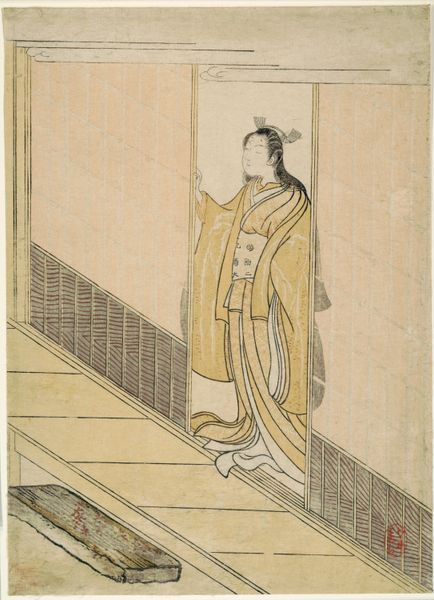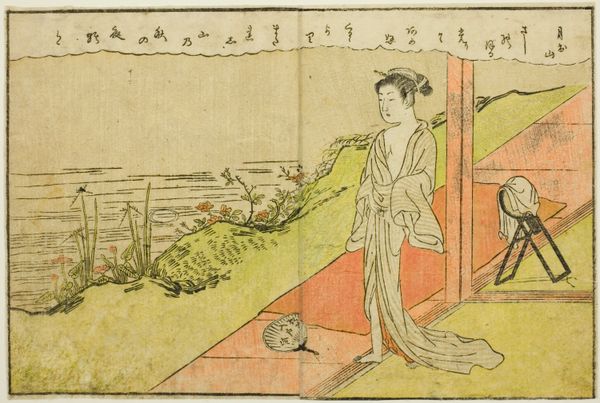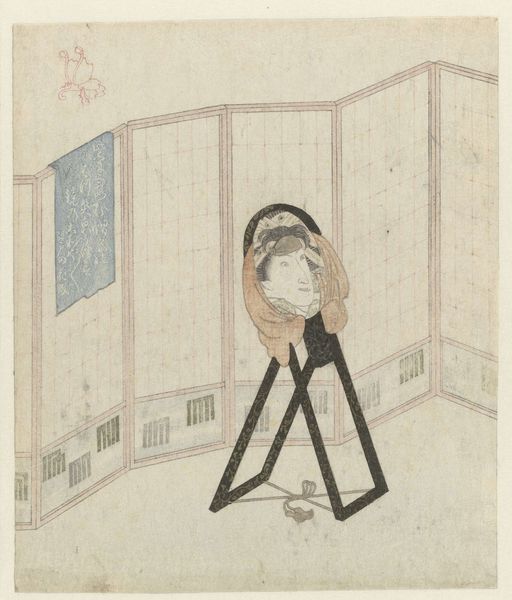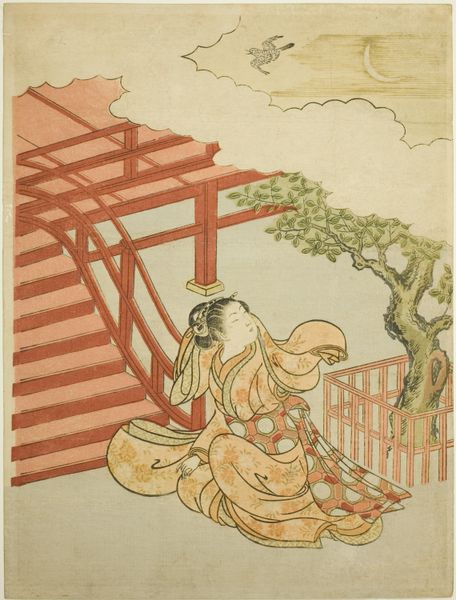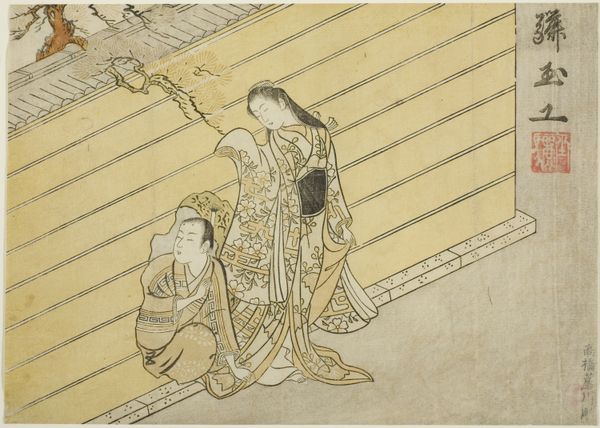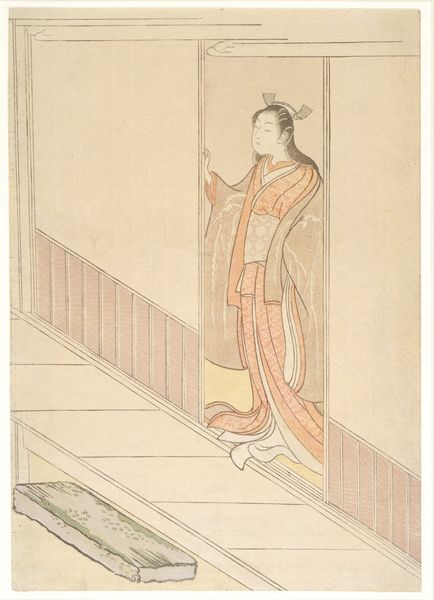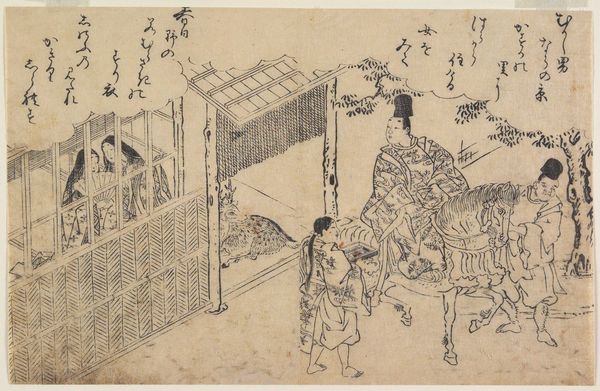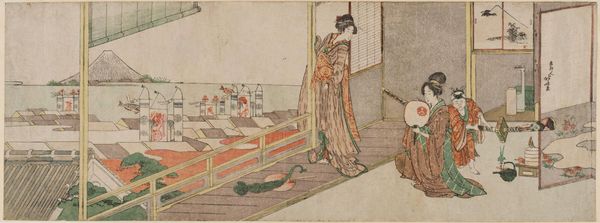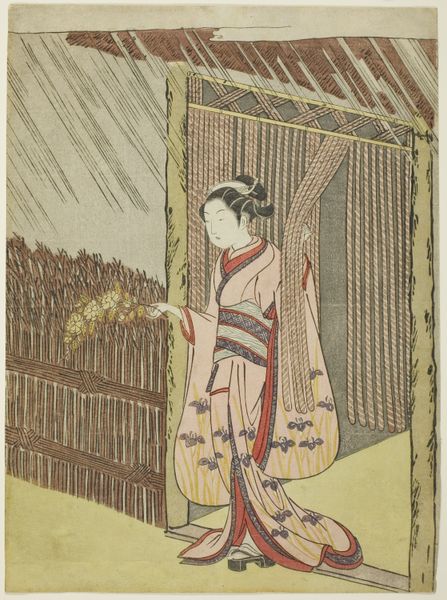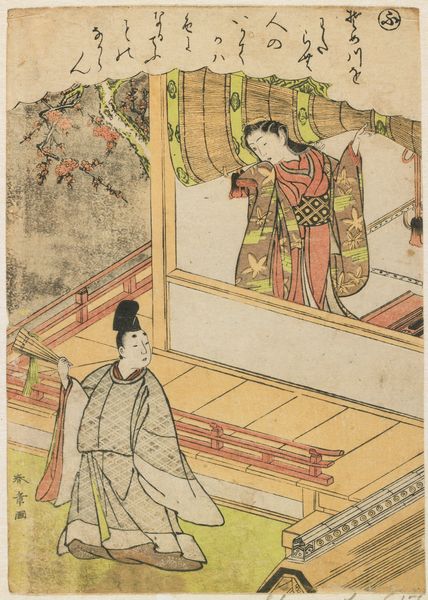
Double-page Illustration from Vol. 1 of "Picture Book of Spring Brocades (Ehon haru no nishiki)" 1771
0:00
0:00
print, woodblock-print
# print
#
asian-art
#
ukiyo-e
#
woodblock-print
#
genre-painting
Dimensions: 17.9 × 26.9 cm (7 1/16 × 10 9/16 in.)
Copyright: Public Domain
Curator: This woodblock print is a double-page illustration from Vol. 1 of "Picture Book of Spring Brocades," or "Ehon haru no nishiki," by Suzuki Harunobu, dating to 1771. Editor: It feels almost dreamlike. The soft colors, the translucent screens, the gentle posture of the woman...there’s an undeniable sense of tranquility and fleeting beauty captured here. Curator: Absolutely. Harunobu, as a leading artist of Ukiyo-e, was masterly in depicting daily life in the Edo period, particularly through images of elegant women. The “Spring Brocades” series is thought to reflect the high culture of the period, but also the socio-economic conditions affecting the lives of women then. What's your sense of the depicted subject? Editor: I see it as an idealized image, filtered through a specific cultural lens. Her simple robe, hairstyle, and pose carry meaning. What stories did she embody, what hopes and desires were assigned to her? This evokes an image that suggests much more than is immediately depicted. I can read her isolation. Curator: It is revealing when considered against the broader socio-political context of Edo society. We can note Harunobu's contribution to "nishiki-e" or brocade pictures--polychrome prints which were groundbreaking and democratized art forms. What feelings emerge for you? Editor: The aesthetic harmony makes the image highly symbolic. Note the delicate lines of the woman's body. Also, her pale skin--is this used to define and reify status in this society, similar to trends found in other contemporaneous art historical depictions? Curator: That’s a compelling point. Representations of female beauty during the Edo period were tightly intertwined with expectations of decorum and societal position. Considering her pose--the lowered gaze, the hint of subservience, combined with these screens--perhaps hints at confinement. But also privilege? Editor: Yes! I see visual harmony, too, expressed as the continuity between interior and exterior--and also the artist's sensitivity and understanding of art's inherent purpose: reflection. The way the light seems to filter through these materials suggests how women are also, ultimately, refracted through a material plane--objects. Curator: Ultimately, this artwork presents both aesthetic beauty and intriguing historical perspectives to unpack! Editor: Indeed. We leave it up to the listener to decide--do they detect compliance, resilience, melancholy, or the eternal appeal of art's mirror reflecting humanity.
Comments
No comments
Be the first to comment and join the conversation on the ultimate creative platform.


